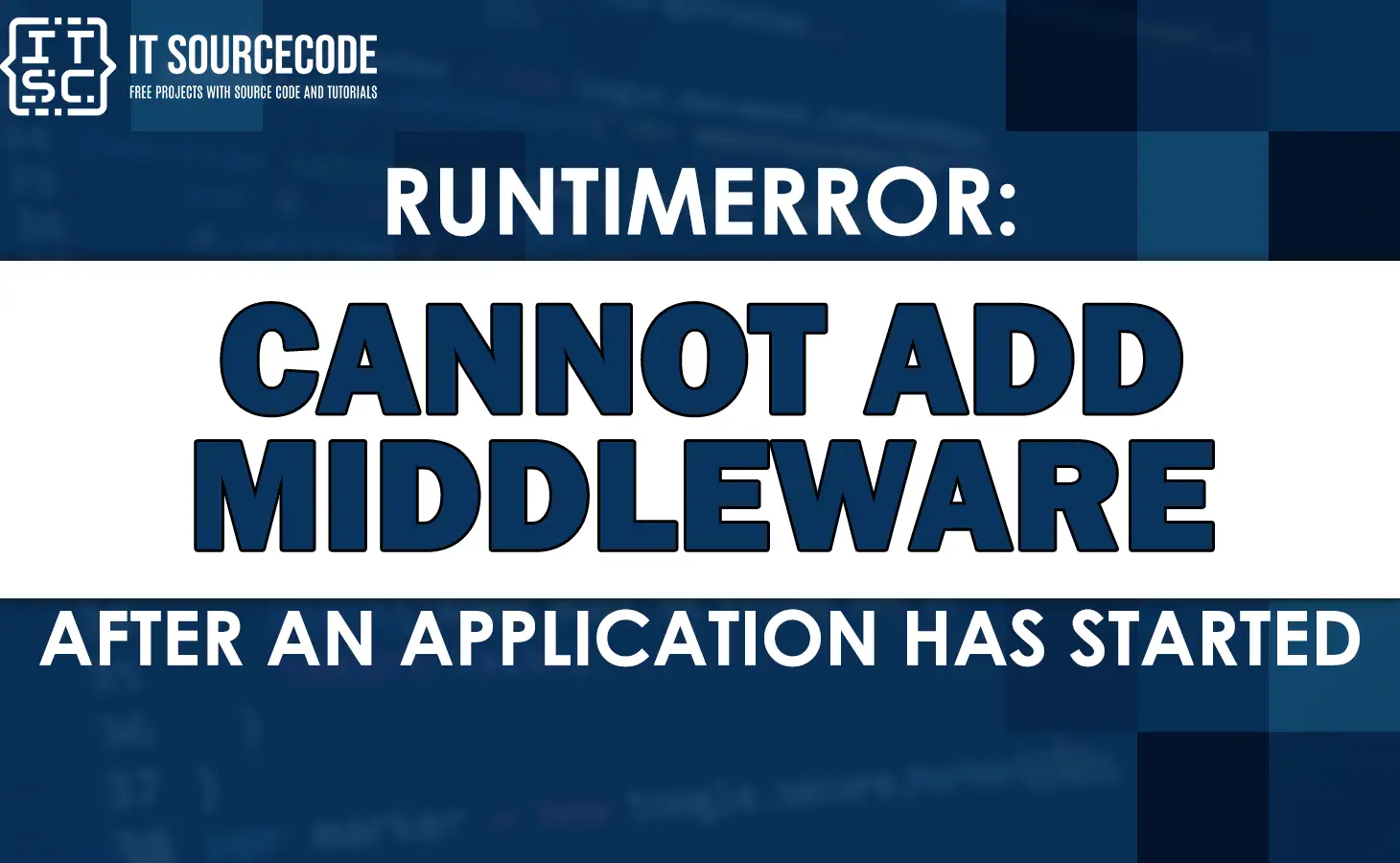One of the common errors you may encounter is runtimeerror: cannot add middleware after an application has started.
This error occurs we attempt to add middleware to our application after it has already started running.
It can be frustrating to encounter this error, specifically if we’re not sure what it means or how to fix it.
In this article, we’ll discuss what the runtimeerror cannot add middleware after an application has started error means
Also, we’ll provide some tips and solutions on how to fix it and how to prevent this error from happening in the future.
What is the runtimeerror cannot add middleware after an application has started error?
This type of error is a common error in Python applications. This error occurs when the middleware is added after the application has started.
Why this error occur?
The error message typically occurs if middleware is added multiple times, or there is a mismatch between the middleware’s function signature and the application’s expectations.
How to fix this error?
Here are the following solutions to solve this error cannot add middleware after an application has started.
Solution 1: Move the middleware initialization before the application object is created
The easiest solution to fix the error is to move the initialization of your middleware before the application object is created.
The middleware will be included in the application object from the beginning, and you cannot be able to add middleware after the application has started.
Solution 2: Using the Flask Application Factory pattern
If you are using Flask, you can use the Application Factory pattern to avoid the error.
The Application Factory pattern involves making a function that returns a new instance of your application object each time it is called.
Solution 3: Using the WSGI MiddlewareWrapper
Another solution is to use the WSGI MiddlewareWrapper. This is a built-in function in Flask that allows you to add middleware to your application at runtime.
The MiddlewareWrapper builds a new instance of your application object each time a request is received, allowing you to add middleware to the new instance before it handles the request.
Tips to Avoid this Error
Here are some tips to avoid the error from occurring:
- Plan your middleware strategy in advance
- Before you start creating your Python application, plan your middleware strategy in advance. Decide which middleware you will need and where it will be initialized.
- Use the Flask Application Factory pattern
- Using the Flask Application Factory pattern not only helps you avoid errors but also generates your code more modular and easier to test.
- Use the WSGI MiddlewareWrapper
- If you’re using Flask, the WSGI MiddlewareWrapper is a great choice to add middleware to your application at runtime.
- Avoid adding middleware dynamically
- In general, the finest to avoid adding middleware to your application dynamically. Instead, initialize all your middleware before the application object is created.
- Make sure to test your application carefully to ensure that it works as expected.
FAQs
The runtimeerror: cannot add middleware after an application has started error occurs when you try to add middleware to your Python application after the application object has been created.
If you’re using Flask, you can add middleware to your application at runtime using the WSGI MiddlewareWrapper.
Planning your middleware strategy in advance helps you avoid errors and make sure that your middleware is included in the application object from the beginning.
Some common examples of middleware in Python applications include authentication middleware, logging middleware, caching middleware, and compression middleware.
Additional Resources
Here re the following additional articles to understand more about Python Runtimerror:
- Runtimeerror: cuda error: device-side assert triggered
- Runtimeerror: couldnt install torch
- Runtimeerror: dictionary changed size during iteration
Conclusion
The runtimeerror: cannot add middleware after an application has started error can be frustrating to encounter, but it’s easy to fix. By following the steps outlined in this article, you can fix the error and prevent it from occurring in the future.
Remember to plan your middleware strategy in advance, use the Flask Application Factory pattern, and avoid adding middleware dynamically.

